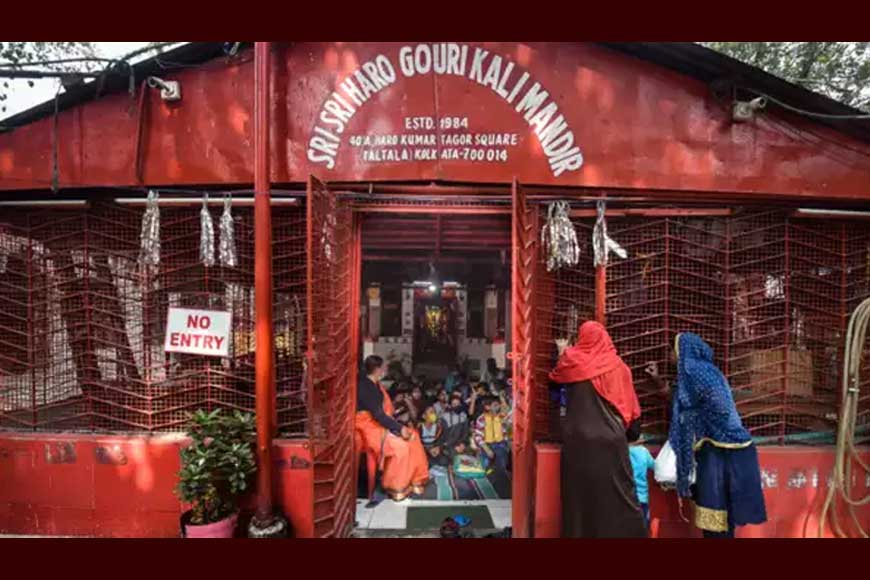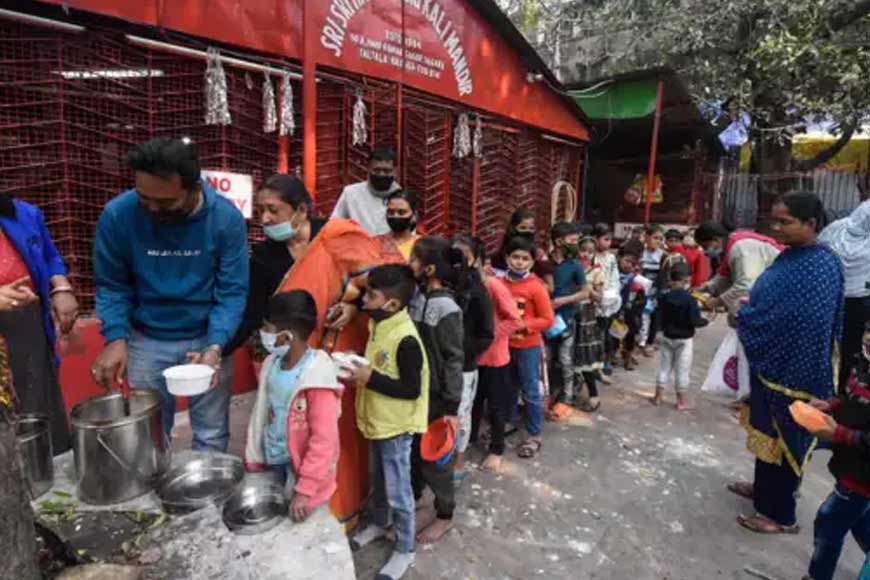Kali Temple: The new abode of learning and venue of communal harmony

Horace Mann, a pioneer of American public schools in the 19th century, famously called education the “great equalizer of the conditions of men.” Education is a mechanism that allows even those from the poorest circumstances to succeed and climb up the socio-economic ladder. But in the wake of the Covid-19 pandemic, education for school-going children has been most severely affected. Now as the pandemic recedes across the country gradually, the government has taken it upon itself to restore normalcy in education at the earliest.
West Bengal had earlier resumed offline classes for classes VIII to XII from February 3 and later launched an open-air classroom programme, Paray Shikshalaya (Neighbourhood Schools) for primary and pre-primary students from February 7. On the very first day of this drive, Kolkata witnessed the true spirit of secularism when 26 students — from pre-primary to Class IV, 90 per cent of them from the Muslim community — walked into a Kali temple to attend classes!
The students of Taltala High School’s primary section, Sri Krishna Chandra Adarsha Vidyalaya and Sishu Siksha Kendra were full of enthusiasm as they hopped and skipped their way to attend their classes on the premises of Sri Haro Gouri Kali Mandir at Haro Kumar Tagore Square in Taltala. The surrounding was enlivened by the noisy chatter of the children and they were seen catching up with each other excitedly on the unprecedented events of the last two years. Their parents stood outside the temple at a distance, keeping a close vigil on their ‘naughty’ wards.

Initially the parents were a little concerned and even wondered if their wards would be allowed to enter the temple premises since they were Muslims but all their worries were put to the rest by the venue in-charge, Ms Namrata Bandyopadhyay. She spoke to them and explained the importance of education above everything. Knowledge is the path to emancipation and no religion or religious dogmatism can impede its path, she insisted. Bandopadhyay was genuinely concerned about the plight of the children who had got out of the disciplined approach to school education, thanks to the Covid-19 menace and hence was eager to initiate the process at the earliest. After scouting for a suitable location, the sprawling temple campus was found perfect for the purpose and the parents agreed to the proposal readily.
During the long lockdown phase, when online classes were introduced, most young pre-primary and primary children were bewildered and found it very difficult to follow the classes online. They also missed their school, their friends and teachers. Even parents are relieved to see the beaming countenance of their children as they rush to attend school offline. Many felt the unique concept would benefit their children as they will learn to respect and value all religions and imbibe the spirit of religious harmony when they grow up.
After the state government floated the idea of Paray Shikshalaya, Bandyopadhyay approached the local councilor and requested for an open space with a shed in the vicinity to resume school from the makeshift venue. After much deliberation, they all realized the temple was best suited for the school.
After this, when Bandopadhyay approached the temple authorities and mooted the idea, surprisingly they were sympathetic to the noble cause and consented without any reservations. They even chipped in the project and offered the rugs stockpiled in the temple store room which are usually taken out during Kali Puja and other festivals to accommodate devotees who throng the holy shrine in large numbers. The washrooms were refurbished and arrangement was made for clean drinking water for the teachers and pupils attending classes in the temple complex.
The school has already started functioning and classes are being held according to routine every day between 10.30 am and 3.30 pm with an hour’s gap in the noon when mid-day meal is served to the children. On Monday, February 6, six teachers from the three schools taught them lessons in English, Bengali and personal hygiene. While classes were being held, the temple priest continued with his puja rituals next to the classes and neither complained of any inconvenience.
The students were bubbling with enthusiasm on the inaugural day as they were united with old familiar faces after a two-year-long hiatus. Many kids looked around in awe and compared the temple with the mosque they went to for prayers and some found both the places of worship quite similar. Above everything else, they were glad to come out into the open and go back to school once more.
Image courtesy : TOI










